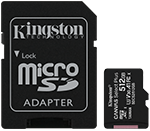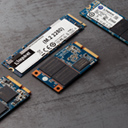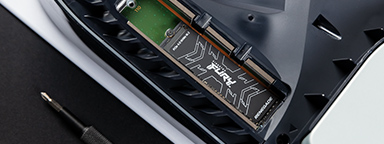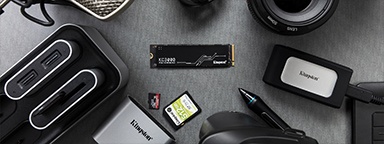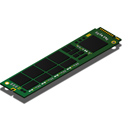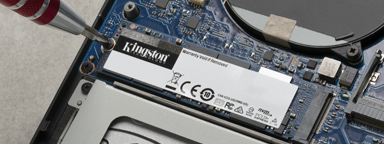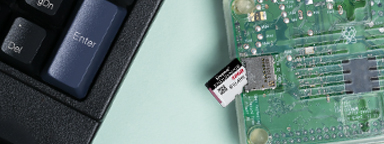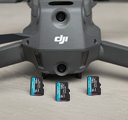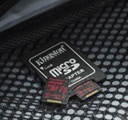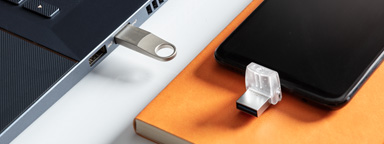Does Content Transfer Read What's on Sd Card
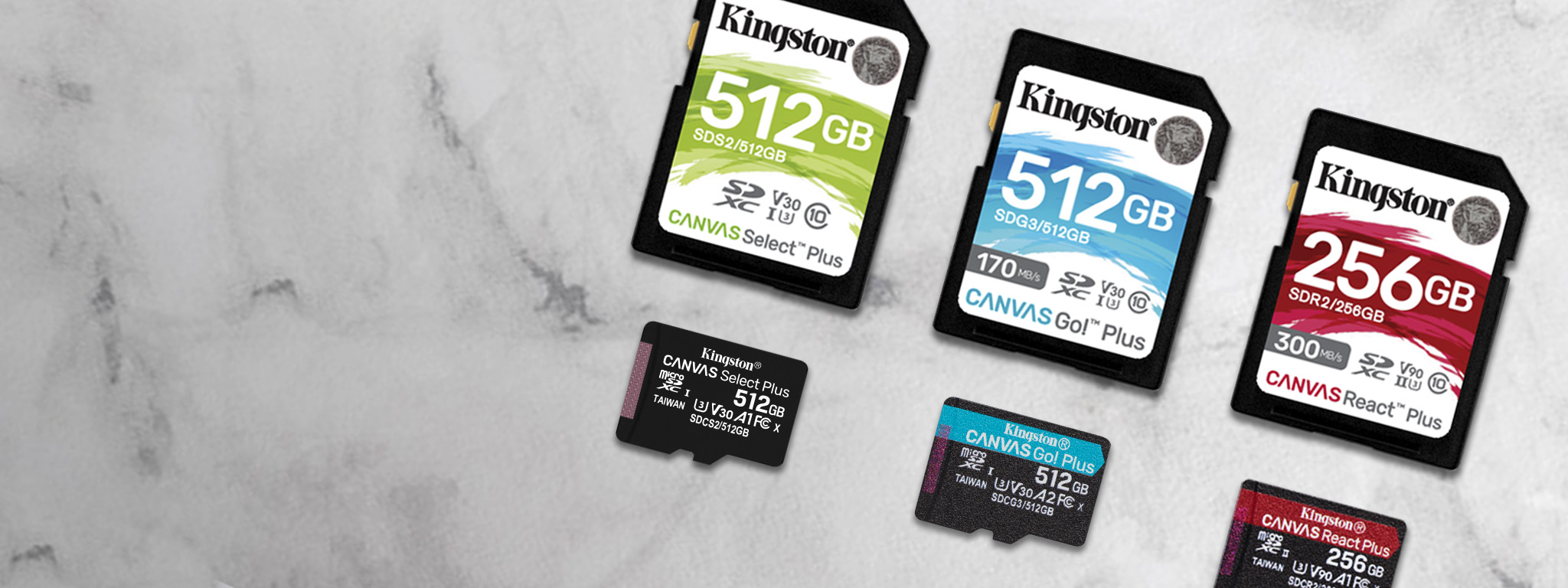
The SD Association came up with a manner to standardise the speed ratings for memory cards. They are known as Speed Classes and refer to the accented minimum sustained write speed for both SD and microSD cards. At that place are three types of speed grade:
- Speed Class
- UHS Speed Class
- Video Speed Class
Numbers with a circular "C" symbol, "U" symbol or a "V" symbol next to or around them signal the speed classes of the retentiveness card. Manufacturers employ these speed class symbols to betoken the type of speed class and rating on the retentiveness menu. They are intended to help consumers choose the right memory menu for their hardware devices in terms of speed.
Speed class
The very first speed class is simply known every bit the original Speed Class and is denoted with a "C" symbol. In that location are four ratings inside the Speed Grade:
- C2 (Class 2): minimum write speed of 2MB/south
- C4 (Class 4): minimum write speed of 4MB/s
- C6 (Form six): minimum write speed of 6MB/s
- C10 (Form 10): minimum write speed of 10MB/s
C2 is the slowest speed class while C10 is the industry standard. Since newer hardware devices require newer speed classes with higher speeds and capabilities, inappreciably anyone uses Class 2–6 nowadays. C10 is usually the minimum speed class requirement for almost hardware devices made today and is the about shipped memory carte du jour on the market.
UHS Speed Course
The adjacent speed grade up is the UHS (Ultra-Loftier Speed) Speed Course and it's denoted with the "U" symbol. There are two ratings within the UHS Speed Class:
- U1 (UHS Speed Form 1): minimum write speed of 10MB/s
- U3 (UHS Speed Class 3): minimum write speed of 30MB/s
The UHS Speed Class is more unremarkably used nowadays than the Speed Form and many loftier-stop cameras crave at to the lowest degree a U3-rated retentiveness bill of fare for many of its functions, such equally recording high-resolution videos. The UHS Speed Class mainly refers to the minimum sustained write operation for recording videos and came virtually due to 4K-capable video recording devices needing faster write speeds. As a rule of thumb, 4K-capable recording cameras volition usually require at least a U3-rated SD bill of fare.
What makes the U1 and U3 memory cards more advanced than those in the Speed Class are that they use one of two UHS bus interfaces:
- UHS-I: theoretical maximum transfer speeds upward to 104MB/s
- UHS-II: theoretical maximum transfer speeds up to 312MB/s
Both U1 and U3 memory cards can use the UHS-I motorcoach interface, but are not compatible with the UHS-2 bus interface.
These UHS autobus interfaces indicate the theoretical maximum read and write speeds, dissimilar the sustained write speeds of speed classes. The UHS bus interfaces are denoted past a Roman numeral "I" or "2" symbol on the front of the carte du jour. The bus speeds refer to the theoretical data transfer rate of the interface itself while a U3-rated SD card has its own sustained write speed of 30MB/s. For case, a UHS-I U3-rated card guarantees a write speed of 30MB/s only has the potential for a read and write speed of upwardly to 104MB/south if used with a device that supports a UHS-I bus interface.
A UHS-Two uniform card has a potential read and write speed of up to 312MB/southward. The UHS bus interfaces are backwards compatible so yous tin use a UHS-2 card in a device that supports UHS-I, merely yous won't see the speed benefits of UHS-Ii every bit the card will default back to the lower specs of UHS-I. Both the card and coach interface must be fully compatible to experience the speed benefits.
Video Speed Class
The latest Video Speed Course was created to enable college video resolution and recording features, such every bit multiple video streams, 360-caste capture, VR content, and 4K- or 8K-resolution videos. They're usually denoted with the "V" symbol. There are five ratings for the Video Speed Grade:
- V6 (Video Speed Class 6): minimum write speed of 6MB/south
- V10 (Video Speed Class ten): minimum write speed of 10MB/s
- V30 (Video Speed Class 30): minimum write speed of 30MB/s
- V60 (Video Speed Form 60): minimum write speed of 60MB/southward
- V90 (Video Speed Class 90): minimum write speed of 90MB/s
The Video Speed Class is unique because it'southward capable of utilising both the UHS-I and UHS-Ii motorbus interfaces. V6 to V90 speed class memory cards can use the UHS-II bus interface, but the UHS-I bus interface tin only back up V6 to V30 speed class retentiveness cards.
The Video Speed Class offers the fastest speeds bachelor and is platonic for ultra-high-resolution videos, high-quality videos and multi-file recording in drones and 360-caste cameras. It supports Hard disk formats upward to 8K video in drones, 360-degree cameras, action cams and VR cameras.
Y'all can find the all-time card for your hardware device by choosing the same speed class or higher than the one required for your device. For case, if your device requires a Form iv retentivity bill of fare, you tin use Speed Class iv, 6 or x. If your device requires a UHS Speed Class i card, you can utilize UHS Speed Class ane or three. The same functionality applies to the Video Speed Class every bit well. Annotation, using a college-rated menu that goes beyond the speed course requirement for a device will all the same work, simply y'all won't be experiencing the full benefits of the higher speed class since the device only supports the lower speed class.
#KingstonIsWithYou
-
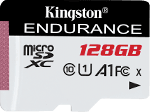
- For home security, professional surveillance, body and dash cams
- UHS-I Speed Class 1 (U1) A1
- 32GB, 64GB, 128GB
- Up to 95MB/s read, 45MB/s write
-

- for shooting 4K UHD video and outburst-mode photography
- UHS-I Video Speed Grade (V30)
- 64GB, 128GB, 256GB, 512GB
- Upwardly to 170MB/s read, 90MB/s write
-

- For shooting 4K UHD video and fast-activeness photos
- UHS-I Video Speed Class (V30)
- A2 app back up for Android
- 64GB, 128GB, 256GB, 512GB
- Up to 170MB/s read, 90MB/s write
-
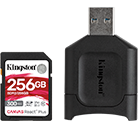
- For industry-standard professional person cameras shooting in 4K and 8K resolution
- UHS-2 video speed grade (V90)
- 32GB, 64GB, 128GB, 256GB
- 300MB/southward read, 260MB/s write
furnellprinnybod59.blogspot.com
Source: https://www.kingston.com/en/solutions/personal-storage/memory-card-speed-classes


